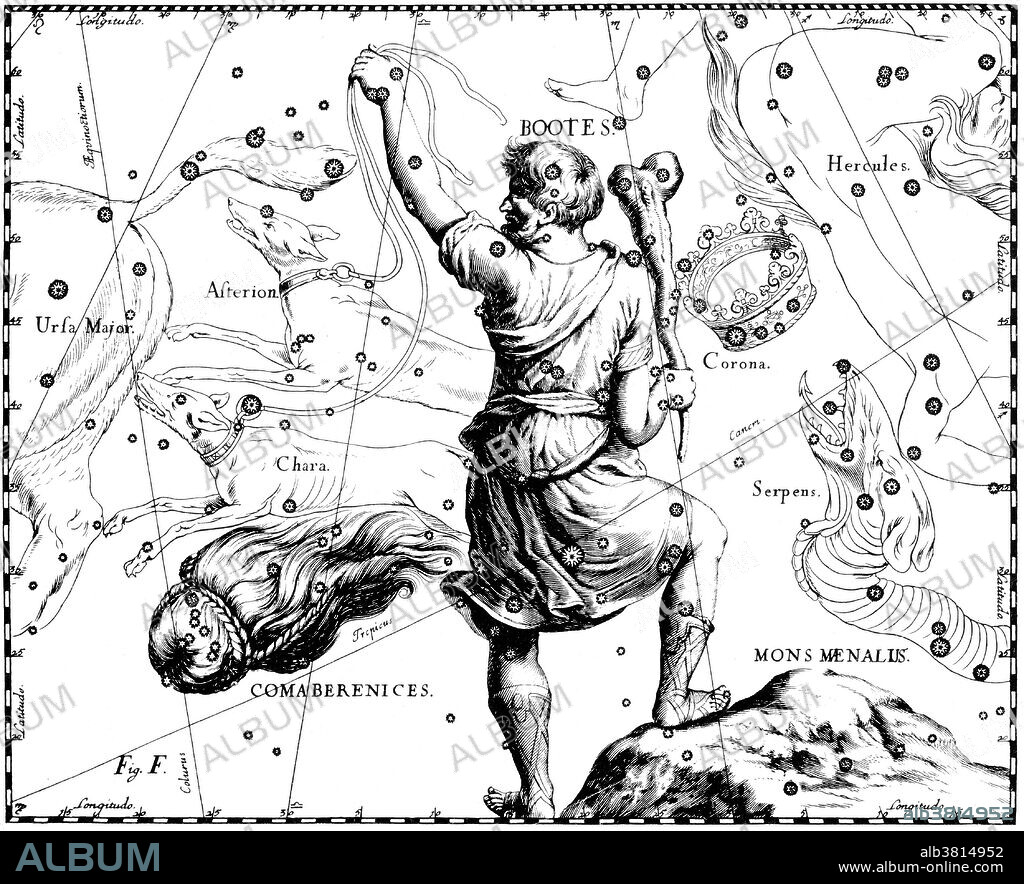alb3814952
Bootes Constellation, Hevelius, 1687

|
Ajouter à une autre Lightbox |
|
Ajouter à une autre Lightbox |



Avez-vous déjà un compte? S'identifier
Vous n'avez pas de compte ? S'inscrire
Acheter cette image

Titre:
Bootes Constellation, Hevelius, 1687
Légende:
Voir la traduction automatique
Bootes constellation from Johannes Hevelius' Prodromus astronomiae, Firmamentum Sobiescianum, sive Uranographia, 1687. Bootes was one of the 48 constellations described by the 2nd century astronomer Ptolemy and is now one of the 88 modern constellations defined by the International Astronomical Union. He holds his hunting dogs, Canes Venatici. Below them is the constellation Coma Berenices. Above the head of Bootes is Quadrans Muralis, now obsolete. The Hevelius Firmamentum was the first star atlas to rival Bayer's Uranometria in accuracy, utility, innovation, and influence. Hevelius was perhaps the most active observational astronomer of the last half of the seventeenth century. His star atlas is notable for many reasons. It contains 56 large, double page engraved star maps. The star positions for the charts were derived from his own star catalog, based on his own observations, which was first published along with the atlas. It is unique among the Grand Atlases in choosing to depict the constellations as they would appear on a globe, that is, from the outside looking in, rather than from a geocentric point of view, as Bayer and most others adopted.
Crédit:
Album / Science Source / New York Public Library
Autorisations:
Modèle: Non - Propriété: Non
Questions sur les droits?
Questions sur les droits?
Taille de l'image:
4500 x 3654 px | 47.0 MB
Taille d'impression:
38.1 x 30.9 cm | 15.0 x 12.2 in (300 dpi)
Mots clés:
 Pinterest
Pinterest Twitter
Twitter Facebook
Facebook Copier le lien
Copier le lien Email
Email
